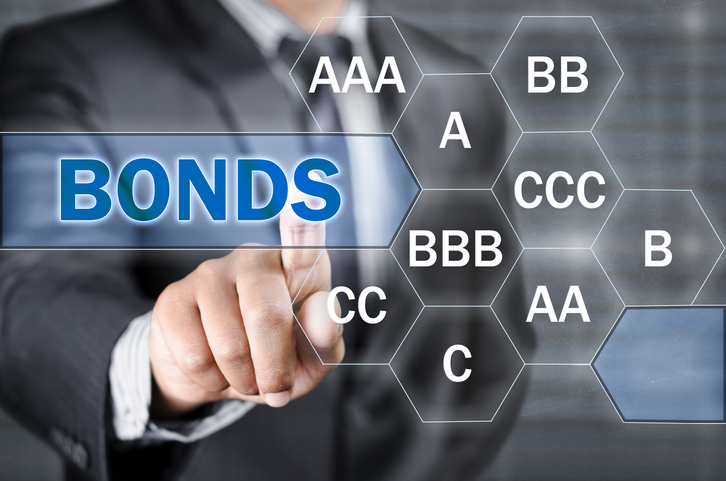How Investors Can Prosper From High Gas Prices
The best approach is to invest in large, high-quality energy firms run by experienced managers.

When prices at the pump shot up four years ago, I suggested that you move some savings to high-yielding oil royalty trusts and master limited partnerships, then use the dividends to pay for gas. It’s time to relaunch this plan.
My original cash-for-gas scheme stalled late in 2008 because the recession pummeled the price of oil. West Texas Intermediate fell from $145 to $30 a barrel. Shares of BP Prudhoe Bay Royalty Trust (symbol BPT), a key driver of my plan because the trust passes along dividends directly from the sale of Alaskan oil, went off the road, plunging from $106 in July 2008 to $50 in March 2009. It’s true that gasoline prices also fell—but except for Treasury bonds, all your other investments got totaled. I bet you’d have preferred to continue paying $4 a gallon rather than losing half your retirement savings.
Don’t expect a big drop in oil prices anytime soon. Even if tensions with Iran ease, you can’t count on economic weakness to bring down the price—the U.S. is growing, and demand for oil is brisk everywhere. The Chinese, for example, have bought 50 million cars since 2008. Moreover, the cost of finding, producing and transporting oil has been rising sharply. And the depressed price of natural gas is having no dampening effect. No wonder West Texas crude was parked near $100 a barrel in mid March.

Sign up for Kiplinger’s Free E-Newsletters
Profit and prosper with the best of expert advice on investing, taxes, retirement, personal finance and more - straight to your e-mail.
Profit and prosper with the best of expert advice - straight to your e-mail.
I concede that my cash-for-gas plan is not for everyone. If you spend $100 a month for fuel and assume that you can collect 6% annually on your investments, you must front $20,000 to drive “free” for a year (and that doesn’t take into account taxes on your dividends). Because this strategy involves some risk, you wouldn’t want to use 20 grand that’s designated as the family emergency fund or reserved for a down payment on a home.
Not surprisingly, the oil-soaked Texas advisers I talked to liked my plan. (When do Texas oil guys ever say anything bad about the black stuff?) Their major concerns are that too many unsophisticated investors are piling into income-producing energy investments and that some questionable exploration companies and royalty trusts have gone public recently. Some of these will fail regardless of the path energy prices take.
Best ideas. The best approach is to avoid the unfamiliar and stick with large, high-quality firms run by experienced managers. Because BP Prudhoe Bay is a pure play on the price of crude, it should be the cornerstone of your energy portfolio. Although the stock has rebounded to a near-record $124 a share, it still yields 8.1% (all prices and yields are as of March 9).
Jerry Swank, head of Cushing MLP Asset Management, in Dallas, is a fan of BP Prudhoe Bay. But he says the best income choices are pipeline networks, such as Plains All American Pipeline (PAA) and Magellan Midstream Partners (MMP), both set up as master limited partnerships. Plains moves crude around the central part of the U.S., and Magellan carries refined products, so the two firms don’t compete with each other. At $80, Plains yields 5.1%; Magellan, at $72, pays 4.5%.
To diversify more, Swank suggests blending in proven producers. He likes Linn Energy (LINE), which explores for both oil and natural gas. Much of its gas is in the form of “liquids,” such as propane, which is more profitable than natural gas. Swank also favors Vanguard Natural Resources (VNR), whose output is two-thirds oil-and-gas liquids and one-third natural gas, one of the highest liquid-to-gas ratios in the group. Vanguard, selling at $29, yields 8.2% and LINN, at $39, yields 7.1%.
James Shelton, of Kanaly Trust Company, in Houston, is less ebullient than Swank because he thinks these energy stocks are getting too pricey. “We continue to like the MLPs, just not as much,” Shelton says. He advises yield hunters to start with energy stocks but to add some high-yield and emerging-markets bond funds. That makes sense. Investors, start your engines.
ORDER NOW: Buy Kiplinger’s Mutual Funds 2012 special issue for in-depth guidance on the only investments you need.
Get Kiplinger Today newsletter — free
Profit and prosper with the best of Kiplinger's advice on investing, taxes, retirement, personal finance and much more. Delivered daily. Enter your email in the box and click Sign Me Up.

-
 Stock Market Today: Stocks Gain on Tech, Auto Tariff Talk
Stock Market Today: Stocks Gain on Tech, Auto Tariff TalkThe Trump administration said late Friday that it will temporarily halt tariffs on some Chinese tech imports.
By Karee Venema
-
 Sam's Club Plans Aggressive Expansion: Discover Its New Locations
Sam's Club Plans Aggressive Expansion: Discover Its New LocationsSam's Club expansion plans will open up to 15 new stores each year. Learn where they plan to open in 2025.
By Sean Jackson
-
 Why Investors Needn't Worry About U.S. Credit Downgrade
Why Investors Needn't Worry About U.S. Credit DowngradeFitch Ratings The United States saw its credit rating downgraded for just the second time in history, but experts aren't worried about the long-term damage to stocks.
By Dan Burrows
-
 Income-Investing Picks for a Recession
Income-Investing Picks for a RecessionInvesting for Income Some consequences of an economic downturn work to the benefit of fixed-income investors. Here are three fund ideas that fit the bill.
By Jeffrey R. Kosnett
-
 Dogs of the Dow Are 2022's Best in Show
Dogs of the Dow Are 2022's Best in Showdividend stocks Some of the best investments for income investors in a volatile 2022 have come from the Dogs of the Dow.
By Jeffrey R. Kosnett
-
 Bond Values in a Volatile Market
Bond Values in a Volatile MarketInvesting for Income While the market's instability may not be over just yet, the latter half of the year should be less daunting – and possibly more rewarding – for investors.
By Jeffrey R. Kosnett
-
 Should You Buy Bonds Now? What To Consider
Should You Buy Bonds Now? What To Considerbonds The fixed-income market has been turned on its head in recent years, but there are still opportunities for those looking to buy bonds again.
By James K. Glassman
-
 Dividend Dates: A Beginner's Guide
Dividend Dates: A Beginner's Guidedividend stocks Everything you need to know about ex-dividend dates, dividend announcements and other parts of the dividend calendar.
By Charles Lewis Sizemore, CFA
-
 Income Investors Should Look Beyond the Ukraine Invasion
Income Investors Should Look Beyond the Ukraine Invasionstocks Unless you invested in a Russian-themed ETF or an emerging markets index fund, the destruction of Moscow's capital markets is a distraction for investors.
By Jeffrey R. Kosnett
-
 Consider Short-Term Bond Funds
Consider Short-Term Bond FundsInvesting for Income These funds own the kind of stuff that benefits from a healthy economy and can withstand the Fed's rate hikes.
By Jeffrey R. Kosnett